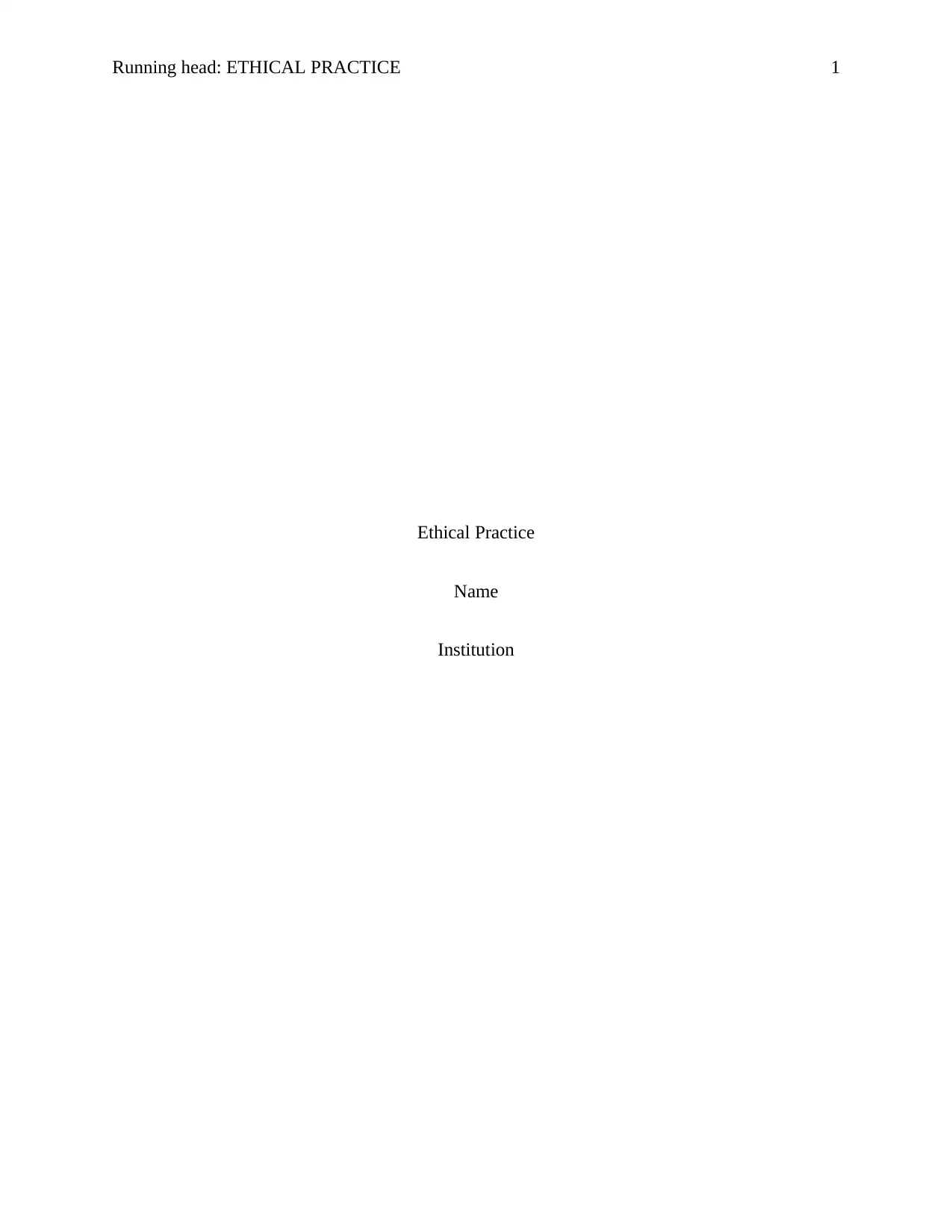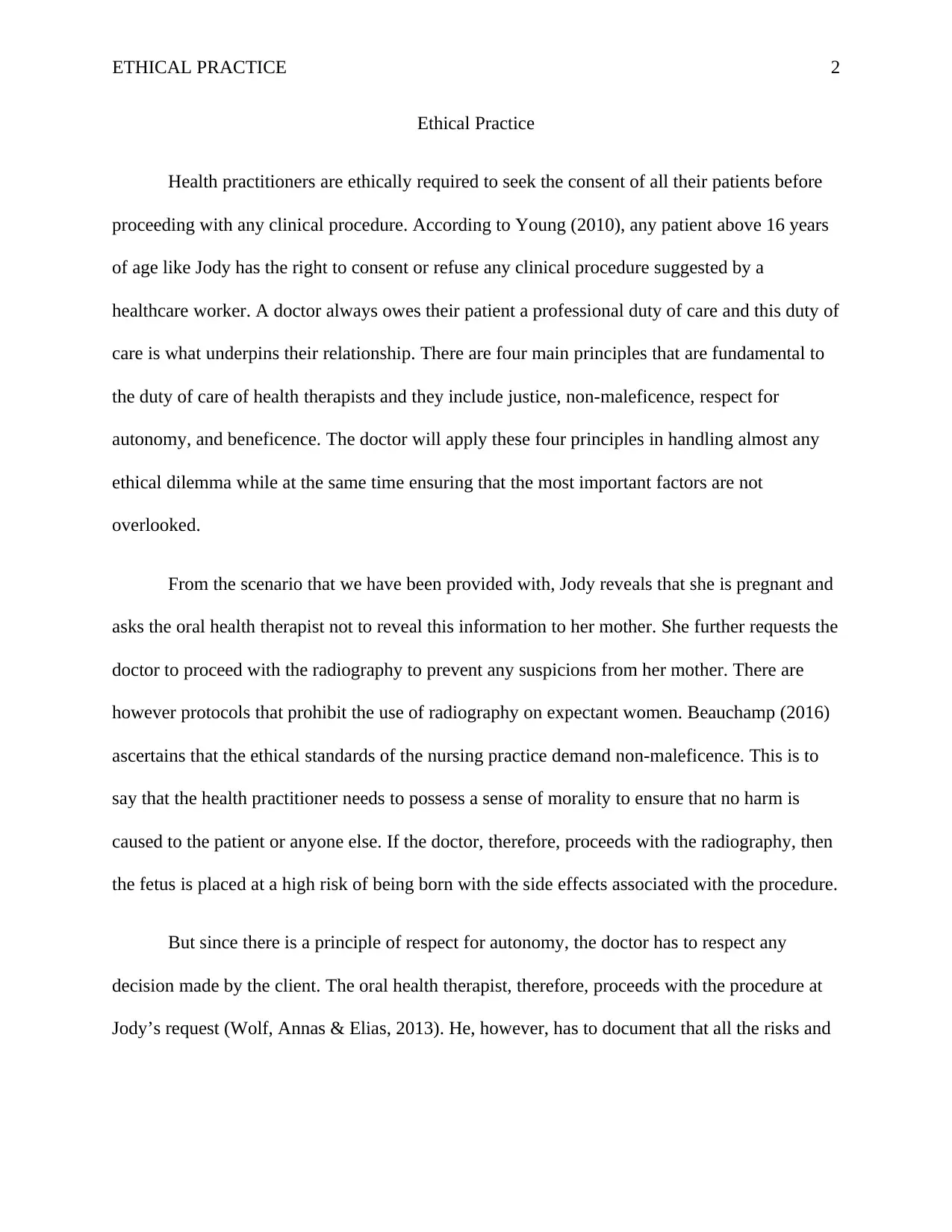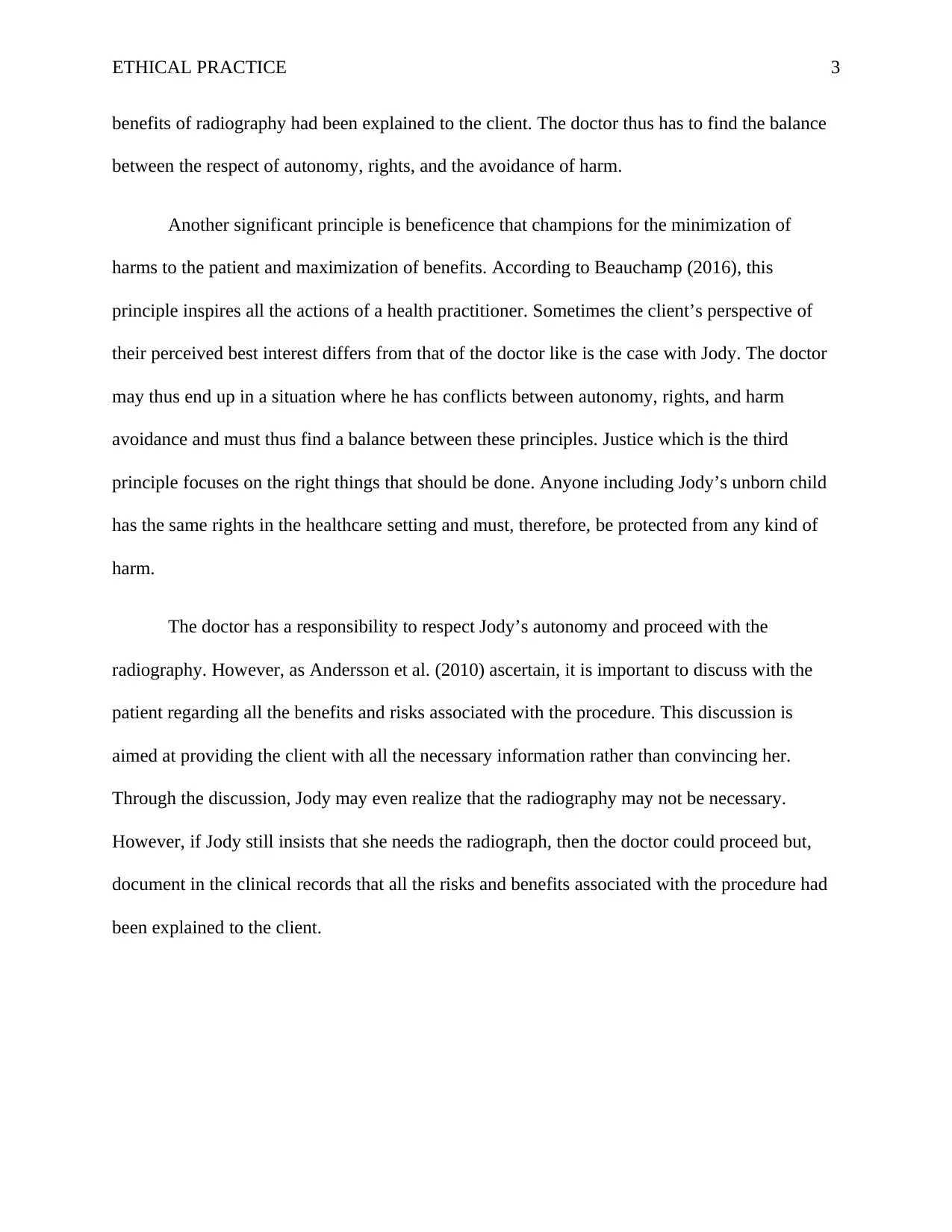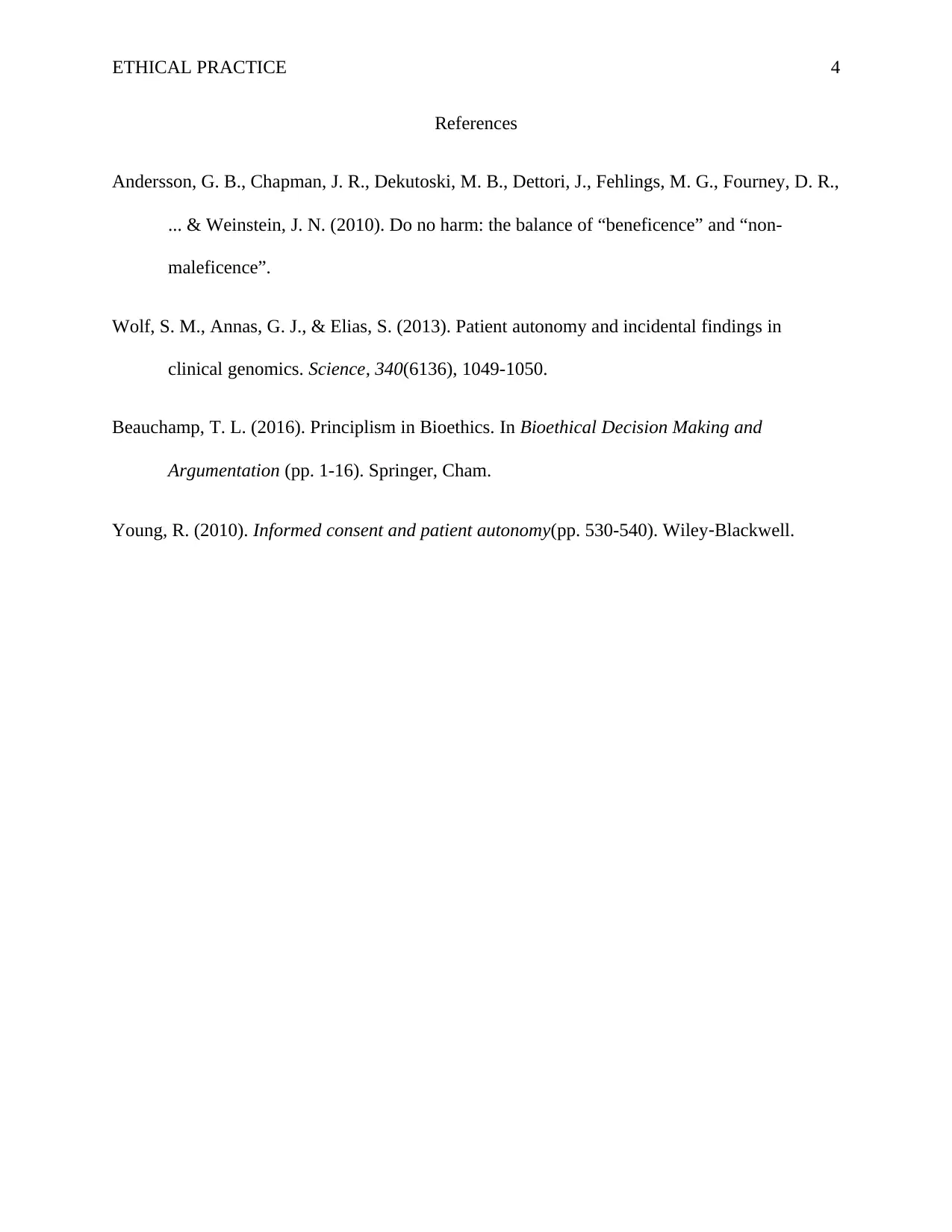Ethical Decision-Making: Balancing Patient Rights and Fetal Safety
VerifiedAdded on 2023/06/11
|4
|785
|256
Essay
AI Summary
This essay delves into the ethical considerations surrounding a scenario where a pregnant patient, Jody, requests an oral health therapist to perform radiography while asking that her pregnancy remain confidential from her mother. The essay highlights the four key principles underpinning a healthcare provider's duty of care: justice, non-maleficence, respect for autonomy, and beneficence. It explores the conflict between respecting Jody's autonomy and the potential harm to the fetus from radiography, referencing ethical standards that prioritize non-maleficence. The essay suggests the importance of a thorough discussion with the patient about the risks and benefits, documenting this discussion, and striving to balance patient rights with the need to minimize harm, ultimately emphasizing the complex ethical landscape healthcare professionals navigate. Desklib offers a wealth of resources, including similar essays and study tools, to aid students in understanding complex ethical dilemmas.
1 out of 4









![[object Object]](/_next/static/media/star-bottom.7253800d.svg)